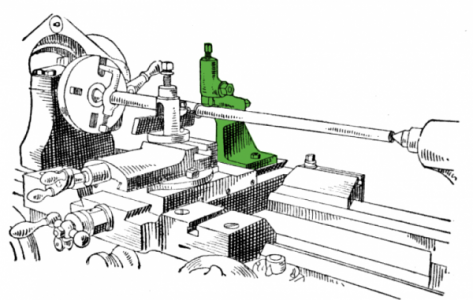- Joined
- Jul 9, 2014
- Messages
- 613
I'm nearly finished making the mount for a fixed steady rest . The travelling one I'd hoped to mount on my lathe is too problematic for my little garage workspace tooling to solve at present .
I want to turn a 19 inch long 17 mm dia round bar from a free cutting hot rolled steel 20 mm rough blank but the blank is at least 1.5 mm out of round .
I understand about mounting the bar between the centers , having turned a couple of shortish test bars without a steady , but I due to the length of this bar I want to ensure it is not going to flex once it gets turning .
How do I used the fixed steady ?
.
Do I set the bar up between centers , turn a short section to just above above the required thickness say 3 inches from the chuck , then put the steady in place on this turned part , moving along another 3 " turn another place for the steady and doing a final one another 3 inches along .
Then turn the bar from tail stock to the chuck to the right dimensions where I'm able to do such a thing .
Finally moving the fixed steady over to a correctly dimensioned area and finish off the whole bar to size ..... or it is better done differently ?
I want to turn a 19 inch long 17 mm dia round bar from a free cutting hot rolled steel 20 mm rough blank but the blank is at least 1.5 mm out of round .
I understand about mounting the bar between the centers , having turned a couple of shortish test bars without a steady , but I due to the length of this bar I want to ensure it is not going to flex once it gets turning .
How do I used the fixed steady ?
.
Do I set the bar up between centers , turn a short section to just above above the required thickness say 3 inches from the chuck , then put the steady in place on this turned part , moving along another 3 " turn another place for the steady and doing a final one another 3 inches along .
Then turn the bar from tail stock to the chuck to the right dimensions where I'm able to do such a thing .
Finally moving the fixed steady over to a correctly dimensioned area and finish off the whole bar to size ..... or it is better done differently ?


